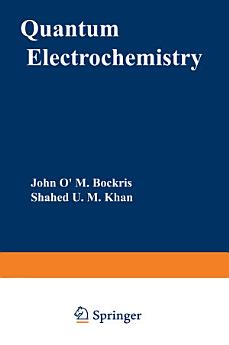Quantum Electrochemistry
Dec 2012 · Springer Science & Business Media
Ebook
518
Pages
reportRatings and reviews aren’t verified Learn More
About this ebook
The origin of this book lies in a time before one of the authors (J. O'M. B.) left the University of Pennsylvania bound for the Flinders University. His collaboration with Dennis Matthews at the University of Pennsylvania had contributed a singular experimental datum to the quantum theory of elec trode processes: the variation of the separation factor with potential, which could only be interpreted in terms of a quantum theory of electrode kinetics. The authors came together as a result of grad~ate work of one of them (S. U. M. K.) on the quantum mechanics and photo aspects of elec trode processes, and this book was written during a postdoctoral fellowship held by him at the Flinders University. Having stated the book's origin, it is worthwhile stating the rational izations the authors had for writing it. Historically, quantization in elec trochemistry began very early (1931) in the applications of the quantum theory to chemistry. (See the historical table on pages xviii-xix.) There was thereafter a cessation of work on the quantum theory in electrochemistry until a continuum dielectric viewpoint, based on Born's equation for solvation energy, began to be developed in the 1950s and snowballed during the 1960s.
Rate this ebook
Tell us what you think.
Reading information
Smartphones and tablets
Install the Google Play Books app for Android and iPad/iPhone. It syncs automatically with your account and allows you to read online or offline wherever you are.
Laptops and computers
You can listen to audiobooks purchased on Google Play using your computer's web browser.
eReaders and other devices
To read on e-ink devices like Kobo eReaders, you'll need to download a file and transfer it to your device. Follow the detailed Help Center instructions to transfer the files to supported eReaders.






